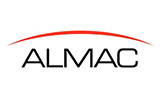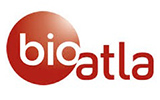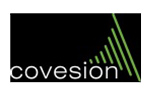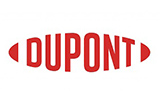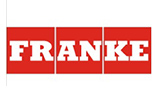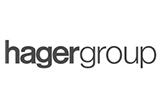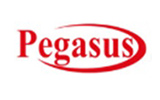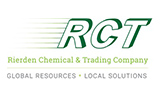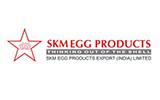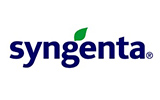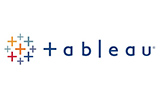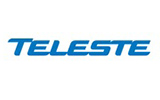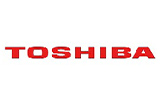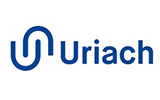CHAPTER 1:INTRODUCTION
1.1.REPORT DESCRIPTION
1.2.KEY BENEFITS FOR STAKEHOLDERS
1.3.KEY MARKET SEGMENTS
1.4.RESEARCH METHODOLOGY
1.4.1.Primary research
1.4.2.Secondary research
1.4.3.Analyst tools and models
CHAPTER 2:EXECUTIVE SUMMARY
2.1.KEY FINDINGS
2.1.1.Top impacting factors
2.1.2.Top investment pockets
2.2.CXO PERSPECTIVE
CHAPTER 3:MARKET OVERVIEW
3.1.MARKET DEFINITION AND SCOPE
3.2.PORTER'S FIVE FORCES ANALYSIS
3.3.PATENT ANALYSIS
3.3.1.By region (2017-2019)
3.3.2.By applicant
3.4.MARKET DYNAMICS
3.4.1.Drivers
3.4.1.1.Increased dependence on electrical equipment and machinery
3.4.1.2.Increasing emphasis on power saving
3.4.2.Restraints
3.4.2.1.Limitations in operations and high overall cost
3.4.3.Opportunity
3.4.3.1.Technological advancement in Power MOSFET
3.5.COVID IMPACT
3.5.1.Impact on market size
3.5.2.End user trends, preferences, and budget impact
3.5.3.End user trends, preferences, and budget impact
3.5.4.Parent industry impact
3.5.5.Key player strategies to tackle negative impact
3.5.5.1.Limiting cuts to R&D expense:
3.5.5.2.Focusing on next-generation products
3.5.5.3.Shifting toward agile supply chain model
3.5.6.Opportunity window
CHAPTER 4:POWER MOSFET MARKET, BY TYPE
4.1.OVERVIEW
4.2.DEPLETION MODE POWER MOSFET
4.2.1.Key market trends, growth factors, and opportunities
4.2.2.Market size and forecast, by region
4.2.3.Market analysis, by country
4.3.ENHANCEMENT MODE POWER MOSFET
4.3.1.Key market trends, growth factors, and opportunities
4.3.2.Market size and forecast, by region
4.3.3.Market analysis, by country
CHAPTER 5:POWER MOSFET MARKET, BY POWER RATE
5.1.OVERVIEW
5.2.HIGH POWER
5.2.1.Key market trends, growth factors, and opportunities
5.2.2.Market size and forecast, by region
5.2.3.Market analysis, by country
5.3.MEDIUM POWER
5.3.1.Key market trends, growth factors, and opportunities
5.3.2.Market size and forecast, by region
5.3.3.Market analysis, by country
5.4.LOW POWER
5.4.1.Key market trends, growth factors, and opportunities
5.4.2.Market size and forecast, by region
5.4.3.Market analysis, by country
CHAPTER 6:POWER MOSFET MARKET, BY APPLICATION
6.1.OVERVIEW
6.2.ENERGY & POWER
6.2.1.Key market trends, growth factors, and opportunities
6.2.2.Market size and forecast, by region
6.2.3.Market analysis, by country
6.3.CONSUMER ELECTRONICS
6.3.1.Key market trends, growth factors, and opportunities
6.3.2.Market size and forecast, by region
6.3.3.Market analysis, by country
6.4.AUTOMOTIVE
6.4.1.Key market trends, growth factors, and opportunities
6.4.2.Market size and forecast, by region
6.4.3.Market analysis, by country
6.5.INVERTER & UPS
6.5.1.Key market trends, growth factors, and opportunities
6.5.2.Market size and forecast, by region
6.5.3.Market analysis, by country
6.6.INDUSTRIAL
6.6.1.Key market trends, growth factors, and opportunities
6.6.2.Market size and forecast, by region
6.6.3.Market analysis, by country
6.7.OTHERS
6.7.1.Key market trends, growth factors, and opportunities
6.7.2.Market size and forecast, by region
6.7.3.Market analysis, by country
CHAPTER 7:POWER MOSFET MARKET, BY REGION
7.1.OVERVIEW
7.2.NORTH AMERICA
7.2.1.Key market trends, growth factors, and opportunities
7.2.2.Market size and forecast, by type
7.2.3.Market size and forecast, by power rate
7.2.4.Market size and forecast, by application
7.2.5.Market analysis, by country
7.2.5.1.U.S.
7.2.5.1.1.Market size and forecast, by Type
7.2.5.1.2.Market size and forecast, by power rate
7.2.5.1.3.Market size and forecast, by application
7.2.5.2.Canada
7.2.5.2.1.Market size and forecast, by Type
7.2.5.2.2.Market size and forecast, by power rate
7.2.5.2.3.Market size and forecast, by application
7.2.5.3.Mexico
7.2.5.3.1.Market size and forecast, by Type
7.2.5.3.2.Market size and forecast, by power rate
7.2.5.3.3.Market size and forecast, by application
7.3.EUROPE
7.3.1.Key market trends, growth factors, and opportunities
7.3.2.Market size and forecast, by Type
7.3.3.Market size and forecast, by power rate
7.3.4.Market size and forecast, by application
7.3.5.Market analysis, by country
7.3.5.1.UK
7.3.5.1.1.Market size and forecast, by Type
7.3.5.1.2.Market size and forecast, by power rate
7.3.5.1.3.Market size and forecast, by application
7.3.5.2.Germany
7.3.5.2.1.Market size and forecast, by Type
7.3.5.2.2.Market size and forecast, by power rate
7.3.5.2.3.Market size and forecast, by application
7.3.5.3.France
7.3.5.3.1.Market size and forecast, by Type
7.3.5.3.2.Market size and forecast, by power rate
7.3.5.3.3.Market size and forecast, by application
7.3.5.4.Rest of Europe
7.3.5.4.1.Market size and forecast, by Type
7.3.5.4.2.Market size and forecast, by power rate
7.3.5.4.3.Market size and forecast, by application
7.4.ASIA-PACIFIC
7.4.1.Key market trends, growth factors, and opportunities
7.4.2.Market size and forecast, by Type
7.4.3.Market size and forecast, by power rate
7.4.4.Market size and forecast, by application
7.4.5.Market analysis, by country
7.4.5.1.China
7.4.5.1.1.Market size and forecast, by Type
7.4.5.1.2.Market size and forecast, by power rate
7.4.5.1.3.Market size and forecast, by application
7.4.5.2.Japan
7.4.5.2.1.Market size and forecast, by Type
7.4.5.2.2.Market size and forecast, by power rate
7.4.5.2.3.Market size and forecast, by application
7.4.5.3.India
7.4.5.3.1.Market size and forecast, by Type
7.4.5.3.2.Market size and forecast, by power rate
7.4.5.3.3.Market size and forecast, by application
7.4.5.4.South Korea
7.4.5.4.1.Market size and forecast, by Type
7.4.5.4.2.Market size and forecast, by power rate
7.4.5.4.3.Market size and forecast, by application
7.4.5.5.Rest of Asia-Pacific
7.4.5.5.1.Market size and forecast, by Type
7.4.5.5.2.Market size and forecast, by power rate
7.4.5.5.3.Market size and forecast, by application
7.5.LAMEA
7.5.1.Key market trends, growth factors, and opportunities
7.5.2.Market size and forecast, by Type
7.5.3.Market size and forecast, by power rate
7.5.4.Market size and forecast, by application
7.5.5.Market analysis, by country
7.5.5.1.Latin America
7.5.5.1.1.Market size and forecast, by Type
7.5.5.1.2.Market size and forecast, by power rate
7.5.5.1.3.Market size and forecast, by application
7.5.5.2.Middle East
7.5.5.2.1.Market size and forecast, by Type
7.5.5.2.2.Market size and forecast, by power rate
7.5.5.2.3.Market size and forecast, by application
7.5.5.3.Africa
7.5.5.3.1.Market size and forecast, by Type
7.5.5.3.2.Market size and forecast, by power rate
7.5.5.3.3.Market size and forecast, by application
CHAPTER 8:COMPETITIVE LANDSCAPE
8.1.INTRODUCTION
8.1.1.MARKET PLAYER POSITIONING, 2019
8.2.TOP WINNING STRATEGIES
8.2.1.Top winning strategies, by year
8.2.2.Top winning strategies, by development
8.2.3.Top winning strategies, by company
8.3.PRODUCT MAPPING OF TOP 10 PLAYER
8.4.COMPETITIVE DASHBOARD
8.5.COMPETITIVE HEATMAP
CHAPTER 9:COMPANY PROFILES
9.1.INFINEON TECHNOLOGIES AG
9.1.1.Company overview
9.1.2.Key Executives
9.1.3.Company snapshot
9.1.4.Operating business segments
9.1.5.Product portfolio
9.1.6.R&D expenditure
9.1.7.Business performance
9.2.FAIRCHILD SEMICONDUCTORS
9.2.1.Company overview
9.2.2.Key Executives
9.2.3.Company snapshot
9.2.4.Operating business segments
9.2.5.Product portfolio
9.3.RENESAS ELECTRONICS
9.3.1.Company overview
9.3.2.Key Executives
9.3.3.Company snapshot
9.3.4.Operating business segments
9.3.5.Product portfolio
9.4.DIGI KEY ELECTRONICS
9.4.1.Company overview
9.4.2.Key Executives
9.4.3.Company snapshot
9.4.4.Operating business segments
9.4.5.Product portfolio
9.4.6.R&D expenditure
9.4.7.Business performance
9.5.TOSHIBA
9.5.1.Company overview
9.5.2.Key Executives
9.5.3.Company snapshot
9.5.4.Operating business segments
9.5.5.Product portfolio
9.5.6.R&D Expenditure
9.5.7.Business performance
9.6.IXYS CORPORATION
9.6.1.Company overview
9.6.2.Key Executives
9.6.3.Company snapshot
9.6.4.Operating business segments
9.6.5.Product portfolio
9.6.6.R&D Expenditure
9.6.7.Business performance
9.6.8.Key strategic moves and developments
9.7.POWER INTEGRATION
9.7.1.Company overview
9.7.2.Key Executives
9.7.3.Company snapshot
9.7.4.Operating business segments
9.7.5.Product portfolio
9.7.6.R&D Expenditure
9.7.7.Business performance
9.8.STMICROELECTRONICS
9.8.1.Company overview
9.8.2.Key Executives
9.8.3.Company snapshot
9.8.4.Operating business segments
9.8.5.Product portfolio
9.9.NXP SEMICONDUCTORS
9.9.1.Company overview
9.9.2.Key Executives
9.9.3.Company snapshot
9.9.4.Operating business segments
9.9.5.Product portfolio
9.9.6.R&D Expenditure
9.9.7.Business performance
9.9.8.Key strategic moves and developments
9.10.TEXAS INSTRUMENTS INCORPORATED
9.10.1.Company overview
9.10.2.Key Executives
9.10.3.Company snapshot
9.10.4.Operating business segments
9.10.5.Product portfolio
9.10.6.R&D Expenditure
9.10.7.Business performance
9.10.8.Key strategic moves and developments

